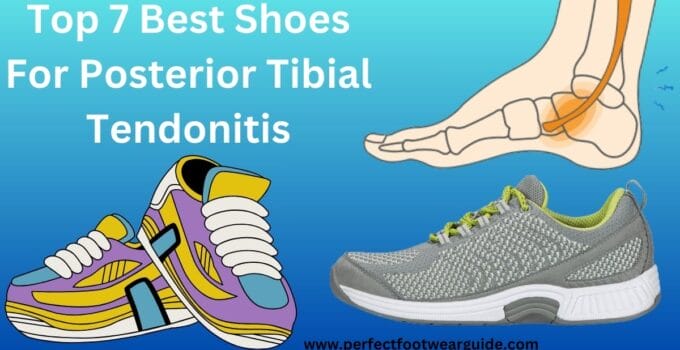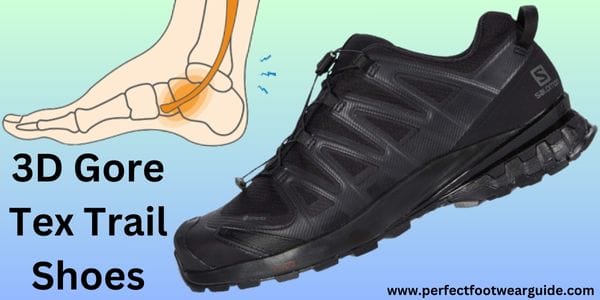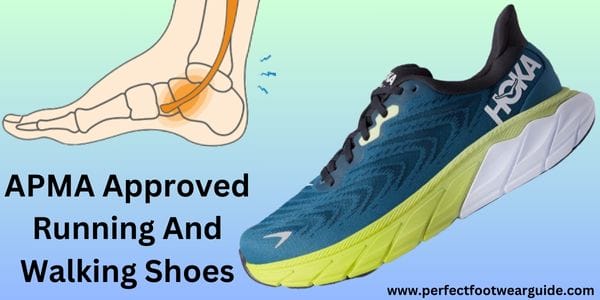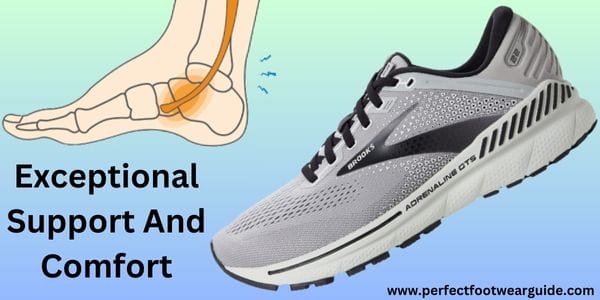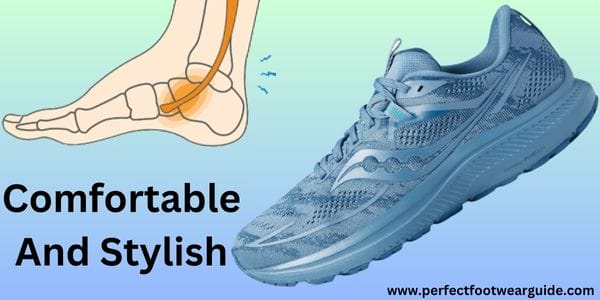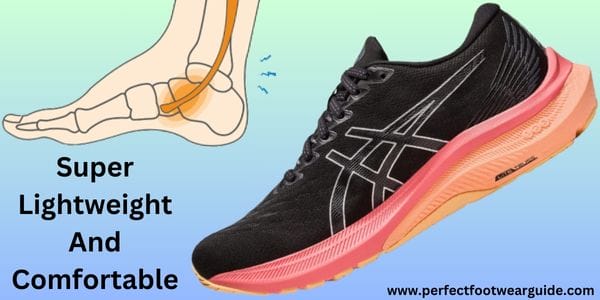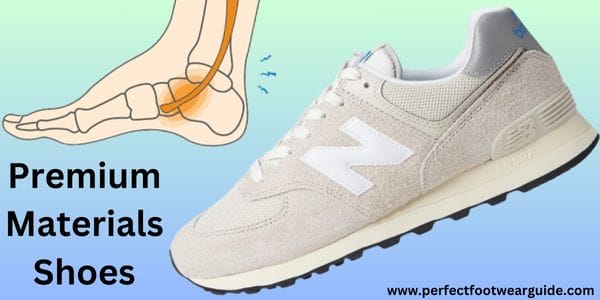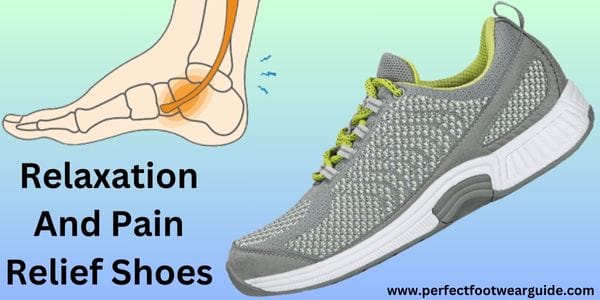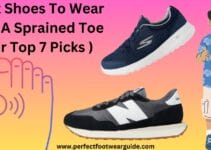Are you or someone you know struggling with Posterior Tibial Tendonitis, a condition that can make every step painful? If so, you are not alone. This article is here to help you find relief and comfort by guiding you in choosing the right pair of shoes.
Posterior Tibial Tendonitis can be a real pain in the foot. It is a condition that affects the tendon running along the inside of your ankle and can cause discomfort, swelling, and even difficulty walking. But here’s the good news: selecting the proper footwear can make a difference.
In this article, we will explore the ins and outs of Posterior Tibial Tendonitis and why having the right shoes matters. We will even list some of the best shoes for posterior tibial tendonitis to help you get back on your feet comfortably. So, let’s take the first step towards relieving that pain and making your daily life more enjoyable. Say goodbye to discomfort and hello to comfortable strides with the best shoes for posterior tibial tendonitis.
Understanding Posterior Tibial Tendonitis
Posterior Tibial Tendonitis may sound like a mouthful, but it’s a familiar and painful problem that affects many people. Let’s break it down to understand what it is and why it matters.
What Is Posterior Tibial Tendonitis?
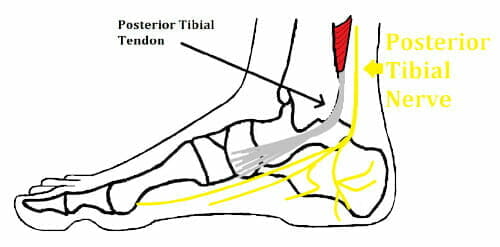
Your feet have many essential parts that work together to help you walk and run. One of these parts is the posterior tibial tendon. Think of it like a strong, stretchy band that runs inside your ankle and down to your arch and heel.
Sometimes, this tendon can get irritated or injured. When that happens, it’s called Posterior Tibial Tendonitis. It is part of the word that means some inflammation or swelling.
Symptoms and Common Causes
Posterior Tibial Tendonitis doesn’t just happen out of the blue. There are common causes and a set of telltale signs to watch out for:
Common Symptoms:
- Pain: You may experience pain on the inside of your ankle and the arch of your foot. This pain can be mild or severe, depending on the extent of the inflammation or damage.
- Swelling: Swelling is a common sign of inflammation. Your ankle and the area around the tendon may become swollen and tender to the touch.
- Weakness: You might notice a decrease in your ability to support your arch, which can lead to a flatfoot appearance and difficulty maintaining balance.
Common Causes:
- Overuse or Overtraining: Engaging in repetitive activities that strain the posterior tibial tendon, such as running or standing for long hours, can lead to irritation and inflammation.
- Improper Footwear: Wearing shoes that lack proper arch support and cushioning can contribute to the development of PTT. Your feet need the right help, especially if you have a high arch or flat feet.
- Aging and Wear and Tear: Our tendons become less flexible and more prone to injury as we age. Over time, the posterior tibial tendon may wear down, leading to PTT.
- Obesity: Carrying excess weight puts additional stress on the feet and tendons, making it more likely to develop PTT.
Understanding these symptoms and causes can help you identify whether you might be dealing with Posterior Tibial Tendonitis. Finding the right solutions to manage and treat the condition is essential. One crucial aspect of managing PTT is choosing the right shoes that provide the necessary support and comfort, which we will delve into in the following sections.
The Importance of Wearing the Right Shoes for Posterior Tibial Tendonitis (PTT)
When you are dealing with Posterior Tibial Tendonitis (PTT), choosing the right shoes is super important, and here’s why:
1- Support and Stability
Think of your feet as the foundation of your body, just like a strong base supports a building. When you have PTT, your posterior tibial tendon isn’t working correctly, and your feet need extra help. Good shoes are designed with arch support and a firm sole to keep your feet in the correct position.
This helps your tendon by reducing strain and giving your arch the support it needs. When you walk, your shoes absorb shock and create a stable platform so your tendon can heal without extra stress.
2- Cushioning for Comfort
Comfort is a big deal when you have PTT. Shoes with good cushioning can make a big difference in reducing the pain and discomfort of this condition. The cushioning in the shoe’s sole acts like a shock absorber, so each step doesn’t put extra strain on your tendon. When you wear comfy shoes, moving around becomes more accessible, lessening the pain with every step. It’s like adding extra padding and support for your feet all day.
3- Preventing More Problems
Wearing the wrong shoes can make PTT worse or even lead to other foot issues like plantar fasciitis or shin splints. Without proper support and cushioning, your condition might worsen, and you might have more problems. So, choosing the right shoes isn’t just about managing your current situation; it’s also about stopping new issues from slowing down your recovery.
4- Long-Term Comfort
PTT isn’t short-term; it can stick around if you don’t manage it properly. Picking the right shoes takes a lot of work. It’s a long-term solution. Shoes with the right features will keep you comfortable and supported throughout your daily activities. This means you can have a better quality of life while dealing with PTT.
The right shoes are essential for PTT. They provide the support, stability, cushioning, and comfort your posterior tibial tendon needs to heal and protect it from further harm. So, when you choose the right shoes, you invest in your health and well-being, making your journey with PTT easier and more comfortable.
How do you choose the best shoes for posterior tibial tendonitis?
If you are dealing with Posterior Tibial Tendonitis, picking the right shoes can improve your comfort and recovery. Here’s how to choose the best shoes to help you manage this condition:
1- Arch Support
Your feet have arches, like the bridges in a city. Arch support in shoes is like a good foundation for these arches. It helps distribute the pressure evenly, reducing stress on the posterior tibial tendon. When choosing shoes, look for ones with built-in arch support. You can also use orthotic insoles for extra help if needed.
2- Cushioning
Imagine walking on clouds the comfort you should look for in your shoes. Good cushioning absorbs shock, which can significantly relieve your feet. Cushioned shoes reduce the impact when you walk and ease the strain on the affected tendon. So, check for shoes with ample cushioning in the sole.
3- Stability
Stability in shoes is like having a firm grip on the ground. It prevents your feet from rolling inward or outward while walking. This is crucial for people with Posterior Tibial Tendonitis because it keeps your feet in a more natural position and reduces strain on the tendon. Look for shoes that are designed for stability and support.
4- Comfort
Comfort is critical when you have Posterior Tibial Tendonitis. Uncomfortable shoes can worsen your condition. Make sure the shoes you choose feel great on your feet. They should fit well, not too tight or loose, and have padded collars and tongues for added comfort.
5- Fit
Choosing the correct shoe size and fit is extremely important. Shoes that are too tight can squish your feet and cause discomfort, while shoes that are too loose may not provide the support you need. Make sure your shoes fit just right, with a little room for your toes to move, but not too much. Take the time to try them on and walk around to ensure a proper fit.
By paying attention to these factors, you can select the best shoes for Posterior Tibial Tendonitis to provide the support and comfort your feet need. Remember, the right shoes can significantly improve your quality of life when dealing with this condition.
Top 7 Best Shoes for posterior tibial tendonitis reviews
Posterior tibial tendonitis is a condition that results from inflammation of the posterior tibial tendon. This tendon runs along the back of your calf and connects your shinbone to your lower leg. Posterior tibial tendonitis can cause pain when you walk or stand and can be debilitating.
If you are dealing with posterior tibial tendonitis, there are a few things you need to know:
- Do not try to self-treat your condition. Doing so will only make it worse.
- Consult with a doctor before starting any new treatment plan.
- Wear shoes that support your leg as much as possible.
Here are seven of the best shoes for posterior tibial tendonitis:
1- Salomon XA PRO 3D Gore-TEX Trail Shoes
Are you searching for the best posterior tibial tendonitis shoes or reliable trail-running shoes for outdoor escapades? Look at The Salomon XA Pro 3D V8 GTX trail-running shoes. These offer impressive features that will keep you comfortable, stable, and well-protected in various weather conditions and terrains.
1- Excellent Performance on Trails: These shoes are designed to be perfect on trails. Whether you’re running or hiking, you can count on these shoes. They have a unique design that gives you a comfortable and supportive experience. The 11mm difference between the heel and toe, lightweight cushioning, and a trail-optimized surface make your runs or hikes feel great.
2- Perfect Fit and Durability: The shoes have a 3D open mesh upper that’s strong and doesn’t have any stitches. They use Sensifit technology to make sure the shoes fit snugly and securely. You can also adjust them to provide you ideally with the Quicklace™ system. Plus, they have a rubber toe cap and mud guard to keep your feet safe on the trails.
3- Weatherproof and Breathable: These shoes have a cool feature called GORE-TEX Performance Comfort Footwear technology. It keeps your feet dry even when it’s wet outside. So, you can take on wet and dry trails without worrying about your feet getting wet. They also have a special lining and a comfy sock liner to ensure your feet feel great.
4- Stable and Comfy: The Salomon XA Pro 3D V8 GTX shoes have the 3D Advanced Chassis™, which keeps your feet steady, even on tricky terrain. They also have a unique midsole that absorbs shock and makes your runs or hikes comfortable, even on long journeys.
5- Excellent Grip: The shoes have a rubber outsole with unique lugs that point in different directions. This gives you maximum grip so you won’t slip on other surfaces. No matter how challenging the trail is, you’ll keep your footing.
The Salomon XA Pro 3D V8 GTX trail-running shoes are a fantastic choice for anyone seeking the best shoes for posterior tibial tendonitis or for outdoor enthusiasts in need of high-performance footwear. Their waterproof construction, enhanced fit, stability, and reliable grip make them a top choice for trail running in various weather conditions. Invest in these shoes, and you’ll experience greater comfort, protection, and confidence on your outdoor adventures.
Pros
- It provides good stability and protection for posterior tibial tendonitis.
- These shoes offer excellent weather protection.
- It is stability allows for more forefoot mobility.
- It is precise fit ensures a snug and comfortable fit.
Cons
- This may make them less comfortable for some people.
2- HOKA ONE ONE Arahi 6 Shoes ( Posterior tibial tendonitis shoes )
The Hoka Arahi 6 is a remarkable shoe that has earned the prestigious American Podiatric Medical Association (APMA) Seal of Acceptance, making it an excellent choice for individuals seeking the best shoes for posterior tibial tendonitis. The APMA Seal is granted to products that promote good foot health and have been rigorously tested and reviewed by experienced podiatrists.
1- Stability and Support: The Arahi 6 is a unique shoe that helps keep your feet stable and prevents them from rolling too much when you walk or run, often called overpronation. It gives you the proper support without making your walking or running style unnatural. This makes it an excellent choice for people with problems with their posterior tibial tendon.
2- Lightweight Design: Although the Arahi 6 is all about stability, it’s surprisingly light. It has a clever J-Frame technology, which helps keep the shoe stable while not making it heavy.
3- Cushioning and Comfort: The Arahi 6 is comfortable because it has lots of cushioning. It’s like walking on clouds. The cushioning also helps absorb the shock from your steps and reduces the strain on your posterior tibial tendon, which is good for your feet.
4- Breathable Mesh Upper: The top part of the shoe is made from a unique mesh material that lets your feet breathe. This means your feet stay cool and dry during exercise, making the shoe look good.
5- Lace-Up Closure: The shoe has laces you can adjust to fit your feet perfectly. This way, you can make it as tight or loose as you like for comfort.
6- Versatile Usage: You can use the Arahi 6 for many things, like running or walking around daily. So, whether you’re a serious runner or need comfy shoes for regular wear, this shoe can do it all.
7- Quality Materials: The shoe is made from textiles and synthetics. These materials are picked because they last a long time, so you’re making a good investment in your foot health.
8- Brand Recognition: You can easily spot the Hoka logo on the tongue and back of the shoe. This shows that the shoe is made by a brand known for making good quality and innovative products.
The Hoka Arahi 6 is an ideal choice for footwear that provides crucial support for posterior tibial tendonitis and delivers comfort and style. Its APMA Seal of Acceptance is a testament to its effectiveness in promoting foot health. Whether you’re an active runner or want a reliable pair of shoes for daily activities, the Arahi 6 is a versatile and supportive option that won’t disappoint. Get your pair and experience the difference in foot comfort and support today.
Pros
- The shoes are made of synthetic materials, which makes them more durable.
- They are machine-washable, making them ideal for people with busy lifestyles.
- They have a rubber sole, which is excellent for people with posterior tibial tendonitis.
- The shoes come in various colors and styles, so they are sure to fit everyone’s needs.
Cons
- They may not be ideal for people who have a high foot arch or wide feet.
3- Brooks Adrenaline GTS 22 Supportive Shoes
The Brooks GTS 22 is a legendary runner favorite for its exceptional support and comfort. These running shoes are designed to balance support and softness, offering a smooth ride ready for any run. No matter what stage of your running journey you are at. These shoes are ideal for everyday runs with a focus on ensuring soft landings and excellent cushioning.
1- Medium Support and Cushioning: These shoes provide the proper support and cushioning. They help keep your feet in the correct position while you’re running, thanks to Brooks GuideRails technology.
2- 100% DNA LOFT Cushioning: The new midsole of the Adrenaline GTS 22 is made entirely of DNA LOFT cushioning. This means you’ll have a soft and smooth ride. It also absorbs shock and reduces the strain on your feet and legs. This is especially good for people with posterior tibial tendonitis.
3- Segmented Crash Pad: The shoes have a unique feature called the Segmented Crash Pad. It helps your feet move naturally and comfortably from landing to pushing off during your runs. This can lower the risk of injuries.
4- Quality Materials: The shoes are solid and breathable. The textile and synthetic upper is durable, and the lining and insole are comfortable. The synthetic sole provides good traction and support.
5- PDAC A5500 Approved: These shoes have received the PDAC A5500 approval. This means they are eligible for Medicare coverage. They are designed for people with specific medical conditions like diabetes and come in multiple widths. If you have Medicare, you might be able to get these shoes paid for through your coverage.
6- Imported: The Brooks Adrenaline GTS 22 is an imported product, which means it meets the high standards of quality and reliability you’d expect from a well-known brand like Brooks.
The Brooks Adrenaline GTS 22 is a top choice for individuals with posterior tibial tendonitis. These offer the perfect blend of support and cushioning to make your runs comfortable and injury-free. The PDAC A5500 approval means that Medicare could cover these shoes. These provide an added benefit for those with specific medical needs. Take advantage of the opportunity to experience the support and comfort the Adrenaline GTS 22 offers. Get ready for your best runs!
Pros
- It is considered a runner favorite for its softness and cushioning.
- The updated midsole is now 100% DNA LOFT cushioning.
- The medium support and cushioning make these shoes ideal for everyday runs.
- The GuideRails technology provides a smooth ride and landing.
Cons
- Some people may find the shoes too stiff or uncomfortable.
4- Saucony Omni 21 Running Shoes ( Best walking shoe for posterior tibial tendonitis )
The Saucony Omni 21 Shoes are the best shoes for posterior tibial tendonitis! These shoes are designed to make your workout sessions comfortable and stylish. Whether you’re a seasoned runner or simply looking for a pair of everyday sneakers that provide excellent support, the Saucony Omni 21 is perfect.
1- Material: The Saucony Omni 21 shoes are solid and comfy, perfect for daily wear and exercise.
2- Breathable Design: These shoes have a unique mesh upper that lets your feet breathe and stay comfortable, even during strenuous workouts. This is great for people with posterior tibial tendonitis, as it reduces irritation and discomfort.
3- Perfect Fit: The shoes have laces and a design that perfectly fits your feet. They are easy to put on and take off with the help of pull tabs.
4 Stability and Support: Stability is essential for people with posterior tibial tendonitis. These shoes provide reasonable support and reduce the risk of further injury or discomfort.
5- Comfort: Padded collars and tongues make these shoes super comfortable. You can focus on your activity without any distractions.
6- Cushioning: The midsole of the shoes is designed to be soft and responsive, which is excellent for people with posterior tibial tendonitis. It reduces the impact on the affected area.
7- Durable Outsole: The bottom of the shoes has a firm rubber sole with good traction so that you won’t slip during various activities.
Whether you’re a runner or walker or need reliable and comfortable footwear, the Saucony Omni 21 Shoes have covered you. They are imported shoes known for their quality and style, making them a great addition to your wardrobe. Invest in your comfort, support, and style with the Saucony Omni 21 Shoes, the best shoes for posterior tibial tendonitis.
Pros
- More supportive cushioning.
- Smooth stability.
- Stable but flexible outsole.
- Foot-hugging FORMFIT.
Cons
- Some users have found the shoes to be too stiff.
5- ASICS GT 2000 11 Road Running Shoes
Are you searching for the best shoes to alleviate the discomfort of posterior tibial tendonitis? Look at the ASICS GT-2000 11 road running shoes. These are designed to provide style and comfort while addressing your needs.
1- FF BLAST Technology Cushioning: These shoes have FF BLAST technology cushioning, which means they are super lightweight and give your feet a nice bounce when you step. This makes them feel comfortable, even during long walks or runs.
2- FLYTEFOAM Technology Cushioning: To make sure the shoes don’t feel heavy on your feet, they use FLYTEFOAM technology cushioning. This not only makes them lighter but also gives excellent support and comfort.
3- Rearfoot GEL Technology: You will love this feature if you have posterior tibial tendonitis. It’s called Rearfoot GEL technology, and it helps your feet absorb shock better and feel softer when you step. This can reduce the strain on your feet.
4- AHARPLUS Heel Plug Rubber: These shoes also have AHARPLUS heel plug rubber, making them durable. That means they’ll last long even if you use them often.
5- LITETRUSS Technology: These shoes provide excellent support and stability for posterior tibial tendonitis patients. It’s because of LITETRUSS technology, which helps your feet feel steady and well-supported.
6- Jacquard Mesh Upper: The top part of the shoes is made of a stylish and breathable material called jacquard mesh. This keeps your feet cool and comfy.
7- Polyester Lining: Inside the shoes, a polyester lining adds to their overall comfort and breathability. Your feet will thank you!
8- OrthoLite X-30 Sockliner: The shoes also come with an OrthoLite X-30 sockliner. It’s not just for comfort but also helps your feet breathe better.
9- FF BLAST Midsole Cushioning: In addition to the FF BLAST technology, the midsole cushioning in these shoes gives you excellent support and comfort during your walks or runs.
10- Lace-Up Closure and Rubber Outsole: These shoes have a lace-up closure to tie them up securely. Plus, the rubber outsole gives you a good grip so you can wear them on different types of ground.
The ASICS GT-2000 11 road running shoes are a fantastic choice for individuals with posterior tibial tendonitis. They offer comfort, support, and style, making them an ideal option for your running needs and daily activities. Don’t let posterior tibial tendonitis hold you back. Choose the ASICS GT-2000 11 road running shoes for the support and comfort your feet deserve.
Pros
- Lightweight with FF BLAST and FLYTEFOAM cushioning.
- Excellent impact absorption with Rearfoot GEL technology.
- Durable thanks to AHARPLUS heel plug rubber.
- Stylish jacquard mesh upper for breathability.
Cons
- It is designed primarily for running, but it may only be suitable for some physical activities.
6- New Balance Classics U574v2 Shoes ( Best shoe for posterior tibial tendonitis )
Suppose you’re searching for the best shoes for posterior tibial tendonitis. In that case, the New Balance Classics U574v2 Shoes might be your perfect match. These classic sneakers offer timeless style and provide excellent support and comfort for individuals with posterior tibial tendonitis.
The New Balance Classics U574v2 Shoes are part of the iconic 574 collection, known for their versatility and reliability. These shoes are not about groundbreaking technology or premium materials but focus on delivering a reliable and comfortable experience. The 574 has earned its status as a beloved classic because it excels at performing a wide range of activities without any pretentiousness.
1- Material Mix: The shoes have a mix of soft textiles and smooth leather, making them stylish and comfy. They can handle everyday wear and tear without a problem.
2- Keeps Feet Fresh: The inside of the shoes has a unique, breathable lining. This helps your feet stay cool and comfy, even if you wear them for a long time. This is super important for people with posterior tibial tendonitis because it stops your feet from getting too sweaty and rubbing against the shoes.
3- Cushioned Insole: These shoes have a squishy insole that adds extra comfort and support. This is a big help if you have posterior tibial tendonitis because it eases the pain and reduces the pressure on the sore area.
4- Shock Absorption: The middle part of the shoe, called the midsole, is made of EVA. It’s excellent at absorbing shock and making your feet feel comfy. This is a big deal for people with posterior tibial tendonitis because it lessens the impact on your feet and legs.
5- Rigid Bottom: The bottom part of the shoe, called the outsole, is made of durable rubber. It can handle different surfaces to use these shoes for various activities. This is important for folks with posterior tibial tendonitis because it provides stability and support.
Whether walking, running, or simply going about your daily routine, the New Balance Classics U574v2 Shoes can be your reliable companion. Their blend of style, comfort, and durability makes them an excellent choice for individuals seeking the best shoes for posterior tibial tendonitis.
Pros
- Classic running silhouette with a modern look.
- Lightweight and supportive.
- It helps protect ankles.
- Excellent for posterior tibial tendonitis.
Cons
- Some people find them too lightweight.
7- Orthofeet Coral Pain Relief Shoes
The Orthofeet Coral Shoes are an excellent option for those suffering from Posterior Tibial Tendonitis. This condition is characterized by pain and inflammation in the posterior tibial tendon.
It runs from the calf muscle to the inside of the ankle and foot. It is a common injury among athletes and individuals who spend much time on their feet. These shoes are designed to provide the necessary support and cushioning to alleviate the symptoms of Posterior Tibial Tendonitis.
The stretchable knitted upper conforms to the foot’s shape. At the same time, the soft, padded fabric interior with no overlays eliminates irritation and friction. The cushioning sole with a mild rocker helps reduce the stress and pressure on the posterior tibial tendon.
These promote healing and prevent further injury. The Orthofeet shoes also feature an ergonomic design that helps improve stability and balance. It reduces the risk of falls and other foot injuries.
The Orthofeet Coral shoes are an excellent option for those looking for comfortable, supportive, cushioned shoes to alleviate the symptoms of this condition. As with any medical condition, it’s always best to consult your healthcare provider for personalized treatment and advice.
Pros
- Designed for pain relief and relaxation.
- They provide a customized and comfortable fit.
- These shoes ensure your feet stay pain-free all day long.
- The stress and pressure on your feet and joints promote healing and prevent further injury.
- You can walk confidently on any surface without slipping.
Cons
- The shoes may not be suitable for those with wide feet.
Types of shoes for posterior tibial Tendonitis
You can buy a few different types of shoes to help with posterior tibial tendonitis. Over-the-counter shoes like sneakers and flats can be helpful in the early stages of the condition. But they may need more support over time. More expensive options, such as custom orthotics or shoe inserts, may be necessary if your pain persists.
When choosing shoes for posterior tibial tendonitis, you must consider your foot type and size. Most people with this condition have pronated feet (a flat foot shape on the inside).
You will want to buy shoes that fit well and provide good arch support. You may also need to choose shoes with a softer interior for better movement.
It is essential to remember that Shoes For PTT should only be used in the short term while trying to recover from the condition. Long-term use can worsen symptoms.
Suppose you are experiencing significant pain or problems with mobility. It is best to seek professional help before making any further purchases.
Treatment tips for shoes for posterior tibial tendonitis
You can do a few things to help treat posterior tibial tendonitis, depending on the severity of your injury.
If the pain is mild or intermittent, wear an elastic bandage around the ankle to keep the foot snugly in place and reduce movement. Suppose the pain is more severe and occurs when walking or running.
In that case, you may need to discontinue activity until the tendon has healed. You may need to ice the injury multiple times daily to reduce inflammation and pain. Finally, taking over-the-counter medication such as ibuprofen or naproxen can also provide relief.
You may need to see a doctor for treatment if you have severe posterior tibial tendonitis. In particular, your doctor may prescribe physical therapy to help improve your range of motion and reduce pain. Additionally, your doctor may recommend surgery to remove the tendon. If it is causing significant distress or if it is not healing correctly.
Treatment For Posterior Tibial Tendonitis
There is no one-size-fits-all answer to treating posterior tibial tendonitis, as the cause and severity of the condition will vary from person to person. However, several different treatments may be effective in relieving symptoms.
Physical therapy
Physical therapy may be beneficial in treating posterior tibial tendonitis by improving the affected area’s range of motion and strength.
Ice therapy
Ice therapy may help to reduce inflammation and pain in the posterior tibial tendon by cooling down the area.
Antidepressants
Antidepressants may help reduce symptoms of posterior tibial tendonitis by decreasing inflammation and pain.
Surgery
Suppose the condition does not improve with other treatments. Surgery may be necessary to remove the damaged tendon.
If you are experiencing symptoms of posterior tibial tendonitis, it is essential to seek medical attention. Treatment may include physical therapy, ice therapy, antidepressants, or surgery.
Caring for Your Shoes
Now that you have found the perfect shoes to help with your Posterior Tibial Tendonitis, taking care of them is essential to ensure they last and continue providing the support you need. Here are some simple steps to keep your shoes in good shape:
1- Keep them clean: Regularly clean your shoes to prevent dirt and grime from building up. Use a damp cloth to wipe off any surface dirt. You can use a leather cleaner to maintain the appearance of leather shoes.
2- Store them properly: Store your shoes in a cool, dry place when you’re not wearing them. Avoid leaving them in direct sunlight or damp areas, as this can damage the material and weaken the support.
3- Rotate your shoes: If you have more than one pair of supportive shoes, it’s a good idea to rotate them. This gives each pair a chance to “rest,” which can extend their lifespan.
4- Replace insoles when needed: The insoles of your shoes can wear out over time. If you notice that they’re no longer providing the support they once did, consider replacing them with new, supportive insoles.
5- Pay attention to wear and tear: Regularly check your shoes for signs of wear and tear. If you notice any cracks, tears, or deformities, it’s time to consider replacing them. Worn-out shoes won’t provide the support you need.
6- Be gentle when cleaning: When cleaning your shoes, be gentle. Avoid using harsh chemicals that can damage the material. Stick to mild soap and water for cleaning when needed.
7- Lace them properly: Ensure your shoes are laced properly. This ensures that they provide the right level of support and stability. You can prevent further strain on your posterior tibial tendon by tightening the laces properly.
By following these simple steps, you can help prolong the life of your supportive shoes and continue to benefit from their assistance in managing Posterior Tibial Tendonitis. Proper care ensures that they’ll continue to provide the support you need to stay comfortable and active.
Exercises and Additional Tips
Now that you know how crucial it is to choose the right shoes for Posterior Tibial Tendonitis, let’s talk about some exercises and extra tips that can make a real difference in managing your condition.
1- Gentle Stretching
Stretching can help relieve tension in your calf muscles and the posterior tibial tendon. Try this simple stretch:
- Stand facing a wall with your hands against it.
- Step one foot back and press your heel into the floor.
- Bend your front knee and lean forward slightly.
- You should feel a gentle stretch in your calf.
- Hold for 15-30 seconds, and then switch legs.
- Do this a few times a day.
2- Toe Taps
This exercise can help strengthen the muscles in your feet and calves.
- Sit in a chair with your feet flat on the floor.
- Lift your toes off the ground, keeping your heels down.
- Lower your toes back down.
- Repeat this 10-15 times on each foot.
3- Ankle Alphabet
Boost ankle strength and flexibility with this fun exercise:
- Sit in a chair with your legs extended.
- Lift one foot off the ground.
- Pretend your big toe is a pencil and draw the alphabet with your foot.
- Repeat with the other foot.
- Try to do this exercise a few times each day.
4- Ice and Rest
If your tendon is sore or inflamed, don’t forget to rest and use ice:
- Ice your affected foot for 15-20 minutes several times a day.
- Avoid activities that worsen the pain.
- Elevate your foot when resting to reduce swelling.
5- Supportive Inserts
Consider using orthotic shoe inserts or custom orthotics for additional support and comfort.
6- Listen to Your Body
Pay attention to your symptoms. If an exercise or activity causes increased pain, stop and consult your healthcare provider.
7- Stay Active
While rest is essential, staying active within your limits can promote healing. Swimming, stationary cycling, or other low-impact exercises may be good options.
8- Proper Nutrition
Eating a balanced diet rich in nutrients can aid in tissue repair. Make sure you’re getting enough vitamins and minerals.
9- Supportive Footwear at Home
Even when you’re not exercising, wear shoes with good arch support and cushioning around the house.
Remember, it’s essential to consult with a healthcare professional before starting any new exercises, especially if you have Posterior Tibial Tendonitis. They can provide personalized guidance and ensure the activities are appropriate for your situation.
By combining the right shoes, exercises, and additional tips, you can take steps to manage Posterior Tibial Tendonitis effectively and improve your overall foot health.
Final Words
Finding the right shoes for dealing with Posterior Tibial Tendonitis is crucial. These shoes can make a big difference in managing your condition and reducing discomfort.
Remember, when you choose your shoes, focus on arch support, cushioning, stability, comfort, and the right fit. We’ve recommended some great options to consider. But it’s not just about the shoes; exercises and self-care play a role, too. Stretching and taking good care of your footwear will enhance the results.
Ultimately, the goal is alleviating discomfort and keeping your feet happy. So, take this advice, explore your shoe options, and take steps towards a more comfortable and pain-free journey with Posterior Tibial Tendonitis. Your feet will thank you!
FAQs
Here are some questions and answers for help in choosing the best shoes for PTTD:
What type of shoe is best for posterior tibial tendonitis?
The best type of shoe for posterior tibial tendonitis is one that provides excellent arch support, stability, and cushioning. Look for shoes with a firm heel counter, a supportive midsole, and a wide toe box to reduce pressure on the affected tendon. Consider consulting with a podiatrist for customized orthotic inserts or shoes designed specifically for managing posterior tibial tendonitis
What should I wear for posterior tibial tendonitis?
Wear supportive and well-cushioned footwear if you have posterior tibial tendonitis. Look for shoes with arch support, a stable heel counter, and shock-absorbing features to reduce strain on the tendon. Avoid wearing high heels, flip-flops, or shoes with minimal support, as they can worsen symptoms and delay recovery.
Is it OK to walk with posterior tibial tendonitis?
While it’s generally okay to walk with posterior tibial tendonitis, it’s essential to listen to your body and avoid activities that exacerbate pain or discomfort. Consider modifying your walking routine by wearing supportive shoes, using orthotic inserts, and avoiding high-impact or strenuous activities until the tendon heals. If walking aggravates your symptoms, consult a healthcare professional for guidance and treatment.
